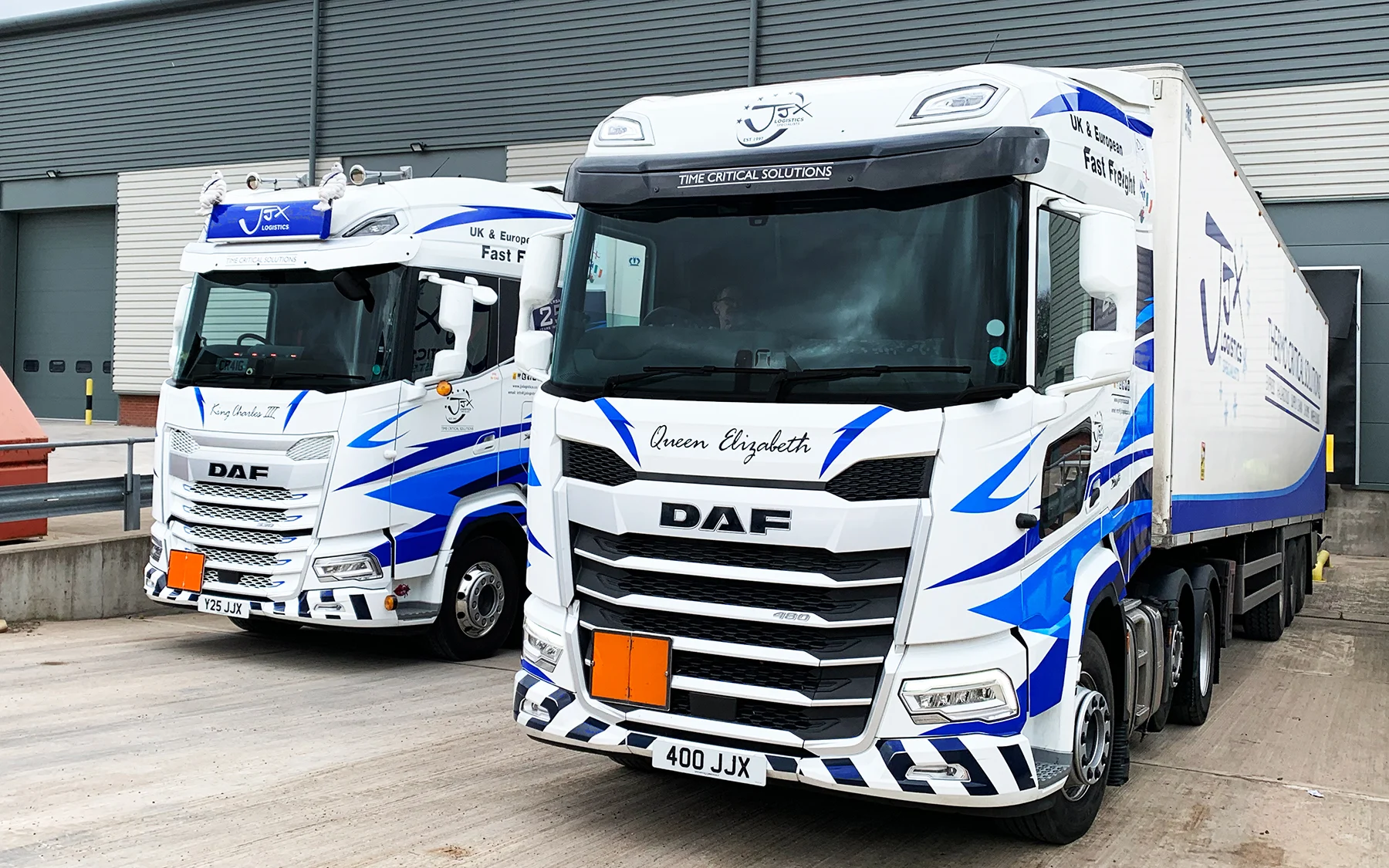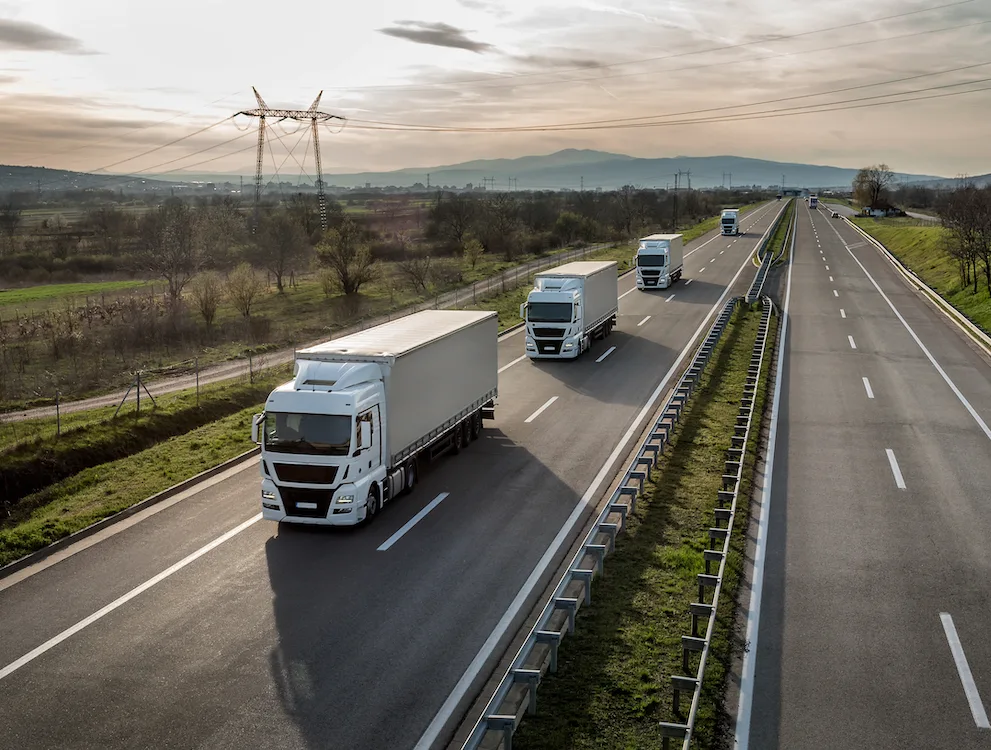Efficiency
Combat Rising Fuel Costs: 6 Ways to Improve Fleet Fuel Efficiency
March 18, 2022
Product Marketing Manager, Telematics

Get the latest from Samsara
Subscribe nowAs fuel costs surge and supply chain disruptions persist across the globe, many organizations have been forced to reevaluate their practices to reduce operating costs. Fuel is a key cost for any organization that operates a fleet of vehicles or equipment. Organizations whose physical operations power our economy—from transportation and logistics companies to public works and beyond—are particularly feeling the pinch.
Fuel is the second largest expense for trucking fleets, representing on average 60% of total operating cost according to an analysis from the American Trucking Associations (ATA). Even slight increases in fuel costs can put major financial strain on operations, and recently the cost of fuel hasn’t just increased—it has surged to all time highs.
The good news is there are actions organizations can take to increase their vehicles’ fuel economy, reducing fuel costs at scale through small changes. Today, technology that provides a digital view of physical operations can help organizations understand where to focus their efforts—not only across their fleet, but across their entire operations.
Operational changes to improve fuel economy might seem burdensome or even insignificant on a per vehicle basis, but it’s important to know that when operating a fleet with tens, hundreds, or thousands of vehicles, even the slightest increase in fuel efficiency can have a tremendous financial impact. Below are six ways to improve fuel efficiency across your fleet.
1. Avoid idling
Experienced drivers may be aware that idling wastes fuel, but the myth that idling is easier on the engine than restarting still remains prevalent. According to a report from the U.S. Department of Energy, idling generally burns more fuel than restarting the engine. This is especially true for medium and heavy duty vehicles, where idling for just 15 seconds wastes more energy than turning off and restarting the vehicle.
If temperatures are low, consider coaching drivers to turn the vehicle on and drive at a slow speed to warm up the engine and the cabin rather than idling—especially any drivers that are new to your fleet.
2. Avoid high speeds, high torque, and harsh braking
According to the U.S. Department of Energy, fuel economy decreases exponentially at speeds above 50 miles per hour (MPH). Reducing your speed by only 10 MPH can improve fuel economy by as much as 14%. The increase to fuel economy is especially significant with medium and heavy duty vehicles. While it may not be realistic to drive at slower speeds on freeways, maintaining a steady speed and using cruise control can also help save fuel.
It’s well known that high torque burns a lot of fuel, but what often leads to rapid acceleration? Harsh braking. Instead of speeding up only to brake, drivers should ease off the gas early and coast. Coaching drivers to minimize harsh braking and harsh acceleration can help reduce fuel use.
In recent years, technology has enabled the use of gamification in professional driving to discourage fuel-wasting behaviors—such as harsh braking, harsh acceleration, and idling—and encourage fuel-efficient driving practices. Gamification is a great way to reduce fuel costs while rewarding and engaging drivers, especially when paired with incentives such as bonuses or gift cards.
3. Combine trips and plan optimal routes
A thoughtfully planned route that allows a vehicle to get from point A to point Z efficiently can significantly reduce distance and time traveled, saving fuel. For heavy duty vehicles, avoiding routes with steep hills is a no-brainer, but consider replanning a hilly route for your medium and light duty vehicles as well (as long as the detour doesn’t take the driver too far off course). For all types of vehicles, it’s always best to avoid routes that are highly congested, cause unnecessary idling, or require excessive starting and stopping.
Today, telematics solutions that include real-time GPS tracking and remote vehicle diagnostics can help you plan the most efficient routes based on a number of different data points. You can also integrate your telematics solution with route optimization software to pre-plan the most efficient routes and provide drivers with turn-by-turn navigation and directions.
4. Keep tires properly inflated, maintain engine health, and service vehicles regularly
Under-inflated tires have a negative impact on fuel economy. According to the U.S. Department of Energy, for every 1 PSI (pounds per square inch) drop in tire pressure, you lose 0.4% of your gas mileage. By keeping your tires properly inflated, you can improve gas mileage by more than 3%.
Additionally, poor engine health and irregular maintenance can also decrease fuel economy. Relying on paper DVIRs (driver vehicle inspection reports) to track and address vehicle and engine issues can leave a lot of room for human error, wasting time, fuel, and ultimately money. Instead, an advanced telematics system can provide real-time data and insights into overall vehicle health, so you can create a proactive and preventative maintenance program and get ahead of the issues before they become a fuel-burning problem.
5. Be conscious about using AC and rolling the windows down
Running AC decreases fuel economy because it adds load to the engine, slightly increasing gas usage. According to the U.S. Department of Energy, using AC can reduce fuel economy by as much as 25%. However, driving with the windows down reduces fuel economy even more than blasting AC because the airflow creates drag, increasing resistance and making the vehicle less aerodynamic. A hot and humid cabin can create an uncomfortable and possibly unsafe driving environment—but coaching drivers to be conscious about when and for how long these cabin cooling methods are used can help reduce inefficient fuel practices.
6. Lighten or reposition the load
According to a Stanford University study, fuel economy roughly halves when vehicle weight is increased from 2,425 pounds to 5,950 pounds. This correlation between weight and fuel economy is especially important to consider with heavier vehicles. Heavy weight creates drag on the engine, burning extra fuel and wasting money. Be conscious about how you organize and stack the load, and be vigilant about removing any unnecessary items from the vehicle, truck bed, or trailer. Particularly with flat-bodied vehicles or trailers, redistributing the weight and minimizing the height of the payload can reduce aerodynamic drag and save fuel.
Samsara can help increase fuel efficiency across your fleet
The Samsara Connected Operations Cloud offers a wide array of features and integrations to increase fuel efficiency and reduce costs. We have helped thousands of customers improve fuel economy and reduce waste across their fleets, saving in aggregate more than 24 million gallons of gasoline annually, which equals roughly $80 million in cost savings.
Dohrn Transfer Company, for example, achieved a 50% reduction in vehicle idling and 2% increase in fuel efficiency after implementing a coaching program based on Samsara dashboard reports. This amounted to 150,000 gallons of fuel saved and over $500,000 in savings per year.
GP Transco used Samsara to analyze idling, greenband driving, speeding, and high torque, which enabled their team to pinpoint areas for impact and build a Fuel Leaders program that offered incentives to the top 50% of drivers. As a result, they reduced idling and saved $350,000 in annual fuel costs—money that was funneled back to drivers.
Looking for more ways to increase fuel efficiency across your fleet and cut down on fuel costs? Check out our guide on How to Build a Fuel Efficient Program. If you’d like to learn more about the Samsara Connected Operations Cloud, reach out for a free trial.
Get the latest from Samsara
Subscribe now
















